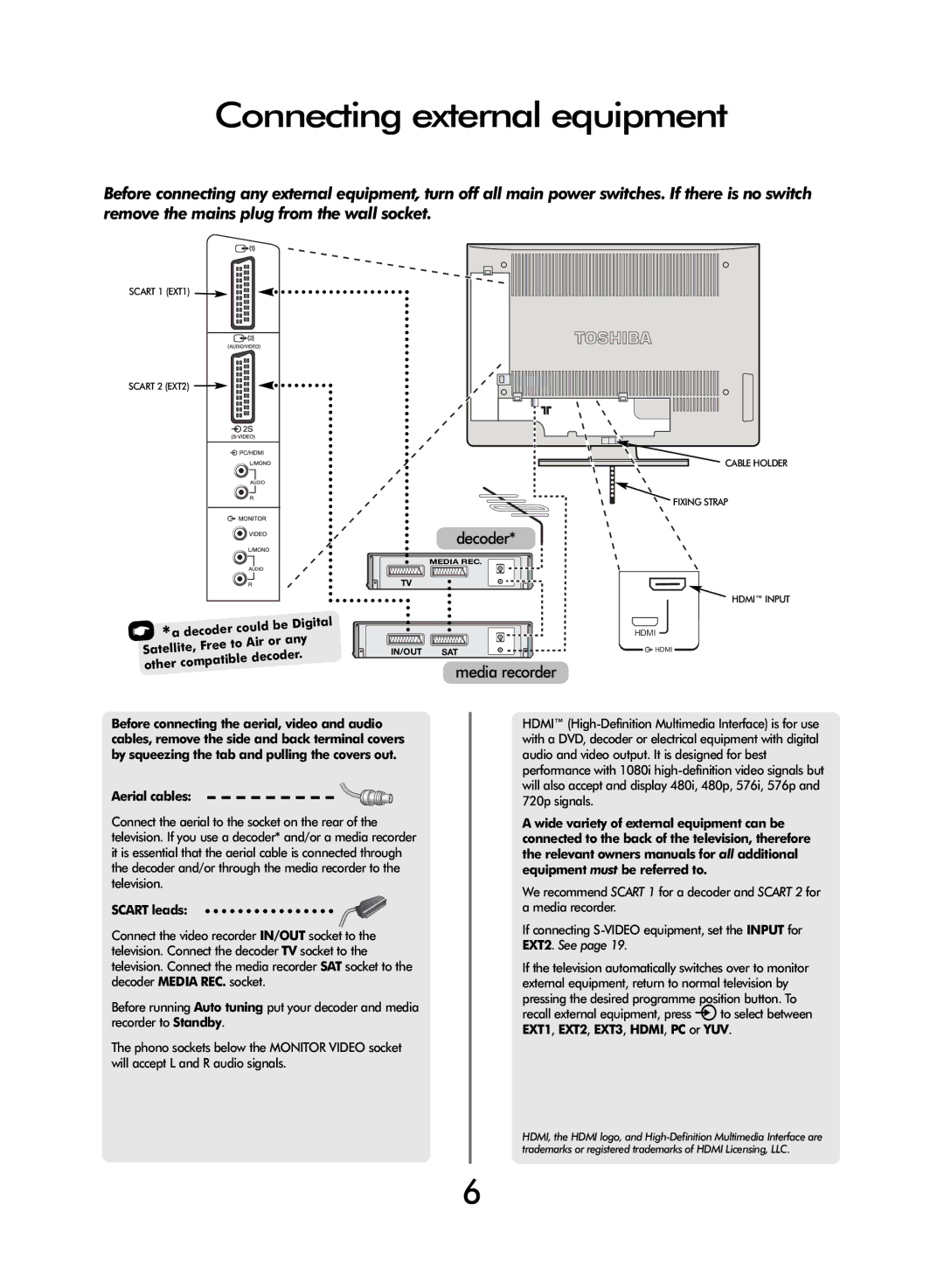
Connecting external equipment
Before connecting any external equipment, turn off all main power switches. If there is no switch remove the mains plug from the wall socket.
SCART 1 (EXT1) ![]()
SCART 2 (EXT2) ![]()
☛ | * |
|
| could | be Digital | |||
a decoder |
|
| or any | |||||
Satellite, | Free to Air | |||||||
| . | |||||||
other | compatible | decoder | ||||||
|
|
| ||||||
|
|
|
|
|
| |||
![]() CABLE HOLDER
CABLE HOLDER
FIXING STRAP
decoder*
MEDIA REC.
TV
HDMI™ INPUT
HDMI
IN/OUT | SAT | HDMI |
media recorder
Before connecting the aerial, video and audio cables, remove the side and back terminal covers by squeezing the tab and pulling the covers out.
Aerial cables:
Connect the aerial to the socket on the rear of the television. If you use a decoder* and/or a media recorder it is essential that the aerial cable is connected through the decoder and/or through the media recorder to the television.
SCART leads:
Connect the video recorder IN/OUT socket to the television. Connect the decoder TV socket to the television. Connect the media recorder SAT socket to the decoder MEDIA REC. socket.
Before running Auto tuning put your decoder and media recorder to Standby.
The phono sockets below the MONITOR VIDEO socket will accept L and R audio signals.
HDMI™
A wide variety of external equipment can be connected to the back of the television, therefore the relevant owners manuals for all additional equipment must be referred to.
We recommend SCART 1 for a decoder and SCART 2 for a media recorder.
If connecting
If the television automatically switches over to monitor external equipment, return to normal television by pressing the desired programme position button. To recall external equipment, press Bto select between EXT1, EXT2, EXT3, HDMI, PC or YUV.
HDMI, the HDMI logo, and
6
